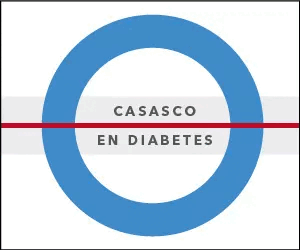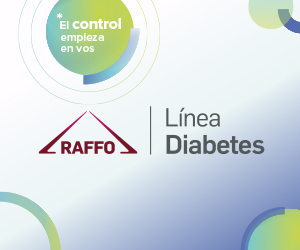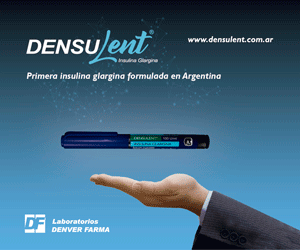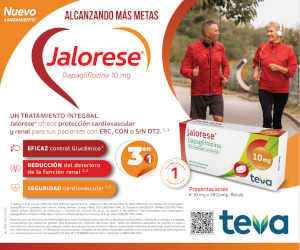P44 Clinical characteristics of patients with Diabetes 2 usually treated in a specialized clinic, from the NEA/SAD chapter
DOI:
https://doi.org/10.47196/diab.v54i3Sup.430Keywords:
clinical characteristics, type 2 diabetes, specialized clinicAbstract
Introduction: Diabetes is a public health problem. The need arises to know the clinical situation and pharmacological treatment of type 2 diabetic patients, in the Diabetes clinic of the different provinces that constitute the NEA /SAD chapter.
Objectives: In patients with Diabetes 2, attended in NEA clinics, in: December 2019, January and February 2020: To know: - sex. - Average age – Evolution time and family history in first degree, of Diabetes. - Metabolic control by HbA1c (last 2). - Pharmacological treatment and self-monitoring. - Cancer frequency and location. - Presence of: Risk factors (Overweight / Obesity, hypertension, dyslipemia, hyperuricemia) and treatment. Chronic complications.
Materials and Methods: Observational, descriptive, transversal and prospective study. Consecutive sample of patients with Diabetes 2, > 18 years. Criteria: Inclusion: More than one year of diagnosis and attendance at the clinic. Exclusion: Acute intercurrences. Data were loaded into a spreadsheet. Descriptive analysis of the variables was performed.
Results: 880 patients. Average age 58 years. Female 465 (52%), Male 423 (48%). Years of diagnosis: <5: 248 (28%), 5 to 10: 338 (38%), > 10: 302 (34%). Family history: YES 445 (50%), NO 247 (28%), don't know 196 (22%). HbA1c: <7% good: 317 (36%), 7.01 to 8% fair: 328 (37%), >8% bad: 243 (27%). Medication: Insulin: 142 (16%), Oral drugs plus insulin: 226 (25%), Oral drugs: 520 (59%); single drug; 214 (41%), combined; 306 (59%). Self-monitoring: NO: 165 (19%). YES: 723 (81%), daily; 341 (47%), 3 per week; 382 (53%). Cancer: NO: 870 (98%). YES: 18 (2%), Lung; 3 (17%), Larynx; 1 (6%), Pancreas; 1(6%), Liver; 1 (6%), Kidney; 3 (17%), Colon; 2 (11%), Breast; 5 (28%), Uterus; 2 (11%). Normal weight: 256 (29%), overweight: 303 (34%), treated yes: 142 (16%), no 161 (18%), obesity: 329 (37%), treated yes: 188 (21%), no: 141 (16%). Hypertension: NO: 247 (28%), YES: 641 (72%), treated yes: 558 (87%), no 83 (13%). Dyslipemias: NO: 413 (47%). YES: 475 (53%), treated yes: 342 (72%), no 133 (28%). Hyperuricemia: NO: 784 (88%). YES: 104 (12%), treated yes: 75 (72%), no 29 (28%). Cardiovascular disease: No: 667 (75%). AMI 90 (10%), stroke 30 (3%), diabetic foot 107 (12%): grade 0: 87 (81%), 1: 5(5%), 2: 4 (4%), 3: 4 (4%), 5: 1(1%), amputation: 6 (6%). Retinopathy: NO: 650 (73%). YES: 238 (27%), non-proliferative: 132 (55%), proliferative: 81 (34%), macular edema: 25 (11%). Peripheral neuropathy: NO: 667 (75%). YES: 221 (25%). Nephropathy: NO: 685 (77%). YES: 203 (23%), Incipient; 131 (65%), established; 58 (29%), advanced; 14 (7%).
Conclusions: Of the patients evaluated, most are women, average age 58. More than 5 years of diagnosis, with family history. Good to regular metabolic control. Treated with oral drugs, they perform self-monitoring. With risk factors, mostly treated. More than 70% do not present cardiovascular disease or microangiopathic complications. Cancer in 2%, being of breast, more frequent.
Downloads
Published
How to Cite
Issue
Section
License

This work is licensed under a Creative Commons Attribution-NonCommercial-NoDerivatives 4.0 International License.
Dirección Nacional de Derecho de Autor, Exp. N° 5.333.129. Instituto Nacional de la Propiedad Industrial, Marca «Revista de la Sociedad Argentina de Diabetes - Asociación Civil» N° de concesión 2.605.405 y N° de disposición 1.404/13.
La Revista de la SAD está licenciada bajo Licencia Creative Commons Atribución – No Comercial – Sin Obra Derivada 4.0 Internacional.
Por otra parte, la Revista SAD permite que los autores mantengan los derechos de autor sin restricciones.

































